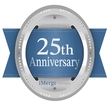How to Foster a Culture of Continuous Innovation in Your SaaS Company
In a 2023 Stanford GSB study on high-growth SaaS firms, one insight stood out: companies that embedded innovation into their operating DNA grew 2.4x faster than peers, even in saturated markets. For CEOs, the question isn’t whether to innovate—it’s how to make innovation a repeatable, measurable, and scalable part of the business.
Fostering a culture of continuous innovation isn’t about hackathons or inspirational posters. It’s about aligning incentives, systems, and strategy to encourage experimentation, reward learning, and drive market relevance. In this article, we’ll explore how to do just that—drawing on research from elite MBA programs, insights from SaaS leaders like Jason Lemkin and David Skok, and data from McKinsey, SaaS Capital, and PitchBook.
1. Track Innovation with the Right KPIs
Innovation without measurement is just guesswork. According to Harvard Business School’s “Leading Innovation” curriculum, companies that define and track innovation-specific KPIs are more likely to sustain long-term growth. Here are key metrics to consider:
- Innovation Velocity: Number of new features or products released per quarter.
- Customer Adoption Rate: Percentage of users engaging with new features within 30 days of release.
- Revenue from New Products: Share of ARR generated from products launched in the last 12–24 months.
- Experimentation Rate: Number of A/B tests or pilots run per team per quarter.
- Time-to-Validation: Average time from idea to validated MVP or customer feedback loop.
Stanford’s “Managing Growing Enterprises” course recommends integrating these KPIs into your executive dashboard to ensure innovation is not siloed in R&D but owned across the org.
2. Build Incentives That Reward Smart Risk-Taking
Innovation thrives when employees feel safe to fail and are rewarded for learning. Atlassian, for example, famously gives teams “ShipIt Days” to work on any idea—many of which have become core features. But beyond symbolic gestures, compensation and recognition systems must reinforce innovation.
- OKRs for Innovation: Set quarterly objectives tied to experimentation, not just outcomes.
- Innovation Bonuses: Offer team-based rewards for validated ideas, even if they don’t scale.
- Failure Postmortems: Celebrate well-executed failures with structured reviews and learning sessions.
Wharton’s research on organizational behavior shows that companies with “psychological safety” outperform peers in innovation output by 30%.
3. Leverage Emerging Technologies to Stay Ahead
According to McKinsey’s 2024 Tech Trends report, AI, low-code platforms, and edge computing are reshaping SaaS delivery models. But adopting new tech isn’t just about tools—it’s about mindset.
To stay ahead:
- Establish a Tech Radar: Assign a cross-functional team to track and evaluate emerging technologies quarterly.
- Run Tech Sprints: Pilot new tools (e.g., AI-driven personalization engines) in isolated environments to test ROI.
- Partner with Startups: Use strategic partnerships or acqui-hires to bring in cutting-edge capabilities.
As explored in How Do We Identify and Evaluate Potential Partnerships or Acquisition Targets, strategic alliances can accelerate innovation without the overhead of full-scale M&A.
4. Use Acquisitions to Inject Innovation
Sometimes, the fastest way to innovate is to buy it. Per PitchBook’s 2023 SaaS M&A report, 42% of mid-market SaaS acquisitions were driven by product expansion or tech capabilities—not just revenue growth.
To assess acquisition viability:
- Use Wharton’s Strategic Fit Framework: Evaluate cultural alignment, tech stack compatibility, and customer overlap.
- Run Innovation Diligence: Beyond financials, assess the target’s product roadmap, engineering velocity, and IP defensibility.
- Post-Merger Integration Plan: Ensure acquired teams retain autonomy to continue innovating post-close.
Advisors like iMerge use proprietary valuation models to identify innovation synergies and structure deals that preserve founder incentives—critical for retaining creative talent.
5. Optimize Marketing and Customer Feedback Loops
Innovation isn’t just about building—it’s about listening. SaaS leaders like Intercom and HubSpot use real-time customer feedback to shape their product roadmaps. According to SaaS Capital’s 2023 survey, companies that integrate customer success data into product planning see 25% higher CLTV.
Best practices include:
- Voice of Customer Programs: Regular interviews, NPS surveys, and in-app feedback tools.
- Customer Advisory Boards: Engage power users in roadmap discussions and beta testing.
- Usage Analytics: Track feature adoption and drop-off points to inform iteration cycles.
As detailed in How Can We Leverage Customer Feedback to Improve Our Product Roadmap, structured feedback loops are essential to aligning innovation with market demand.
6. Align Financial Forecasting with Innovation Investment
Innovation requires capital—but not all R&D spend is created equal. Harvard’s “Financial Management of Innovation” course emphasizes the importance of linking innovation investments to measurable financial outcomes.
Key tools include:
- Innovation ROI Models: Forecast payback periods and NPV of new product initiatives.
- Scenario Planning: Model best-case and worst-case outcomes for experimental features.
- Capital Allocation Reviews: Reassess innovation budgets quarterly based on traction and market shifts.
For SaaS firms eyeing an exit, aligning innovation with financial performance can significantly impact valuation. As discussed in SaaS Key Performance Metrics (KPIs) and Valuation Multiples, metrics like LTV:CAC and ARR growth are closely tied to product innovation and customer stickiness.
7. Ensure Regulatory and IP Compliance
Innovation without compliance is a liability. With increasing scrutiny on data privacy (e.g., GDPR, CCPA) and AI ethics, SaaS companies must embed compliance into their innovation lifecycle.
Checklist for compliance-aligned innovation:
- Data Governance: Ensure new features comply with data handling and storage regulations.
- IP Protection: File patents or trademarks for proprietary algorithms or workflows.
- Ethical AI Reviews: Audit AI models for bias, explainability, and training data provenance.
As highlighted in What Legal and Regulatory Requirements Must We Comply With as a SaaS Company, early-stage compliance planning reduces friction during due diligence and increases buyer confidence.
Conclusion: Innovation as a Strategic Asset
Fostering a culture of continuous innovation isn’t a one-time initiative—it’s a strategic capability. From tracking the right KPIs to aligning incentives, leveraging acquisitions, and embedding compliance, innovation must be woven into the fabric of your SaaS company.
Whether you’re scaling toward a $50M exit or navigating a competitive market, innovation is your moat—and your multiplier.
Scaling fast or planning an exit? iMerge’s SaaS expertise can guide your next move—reach out today.



